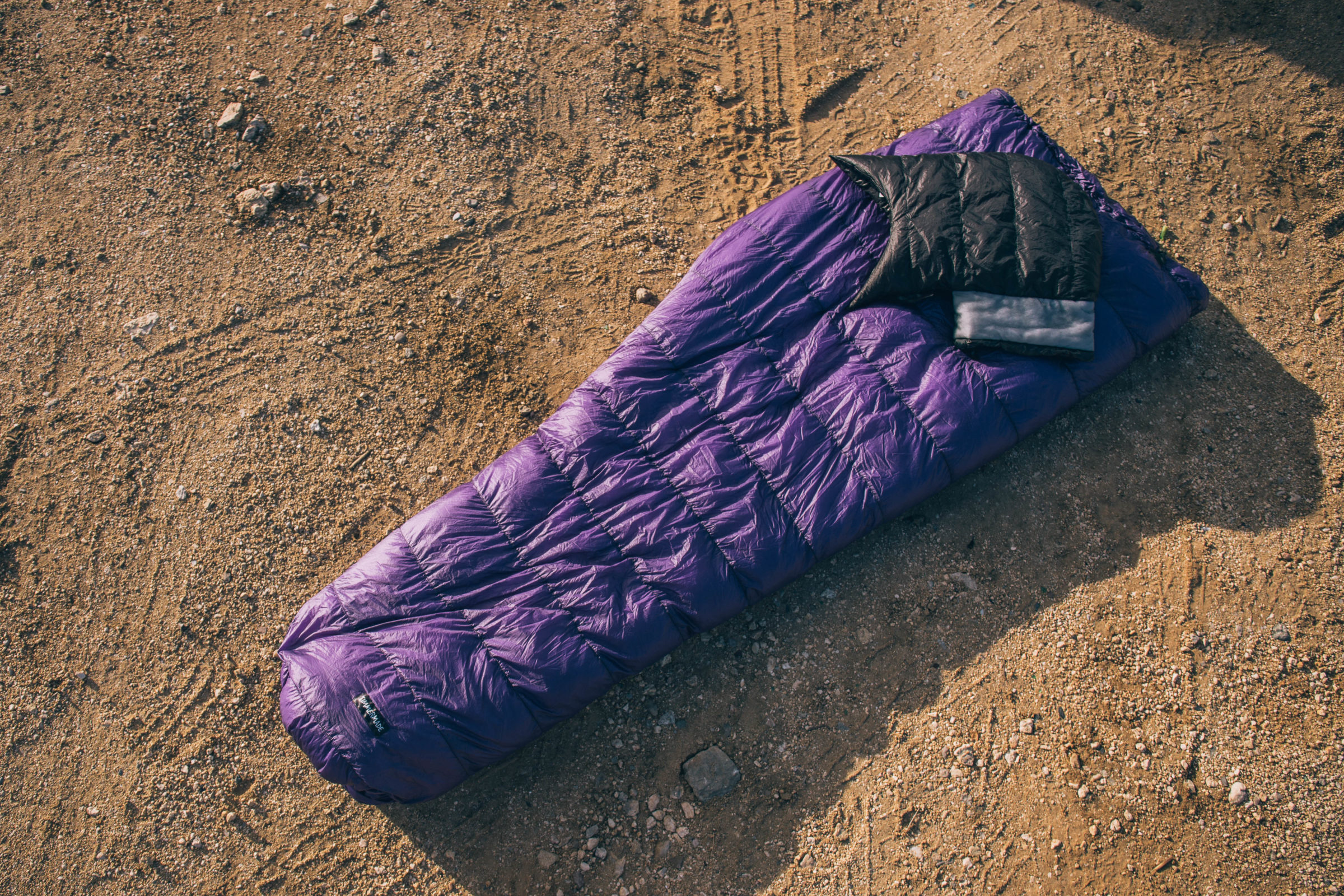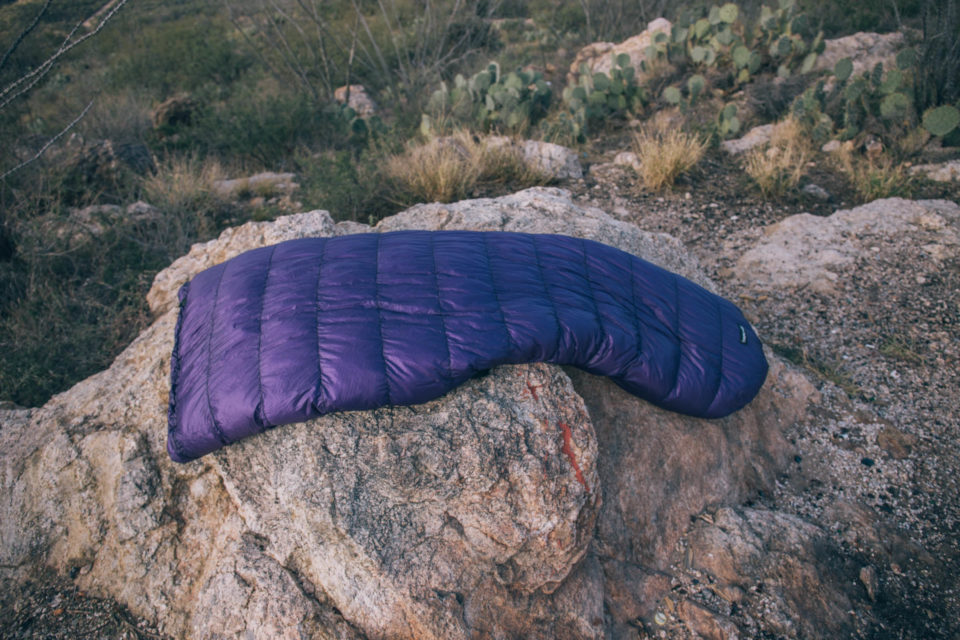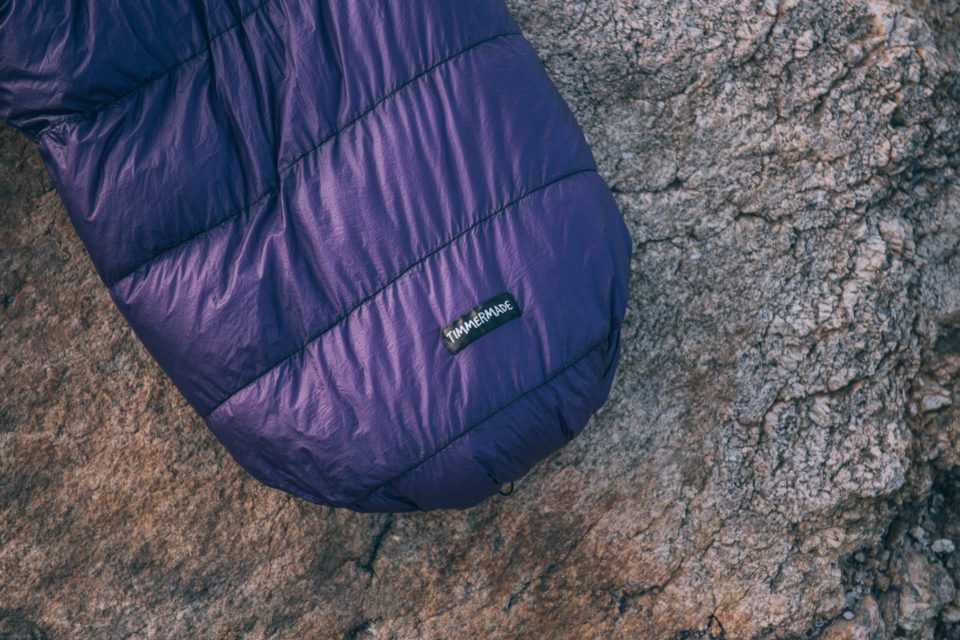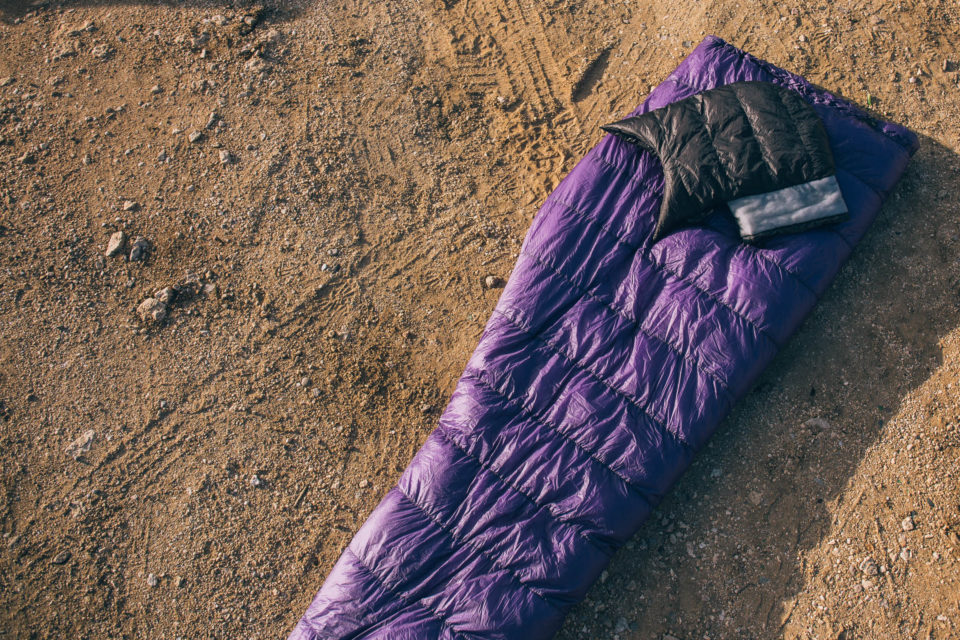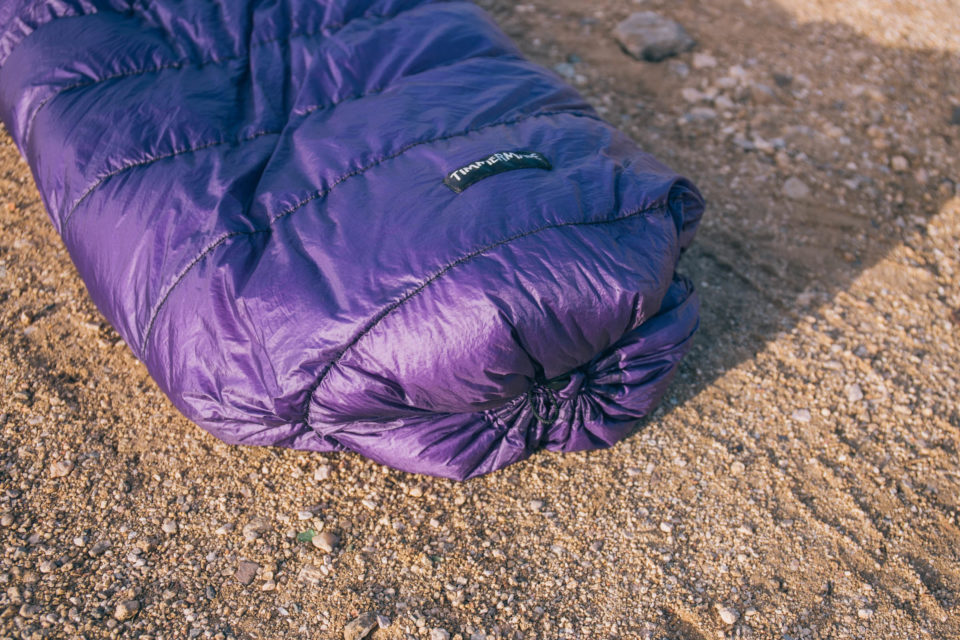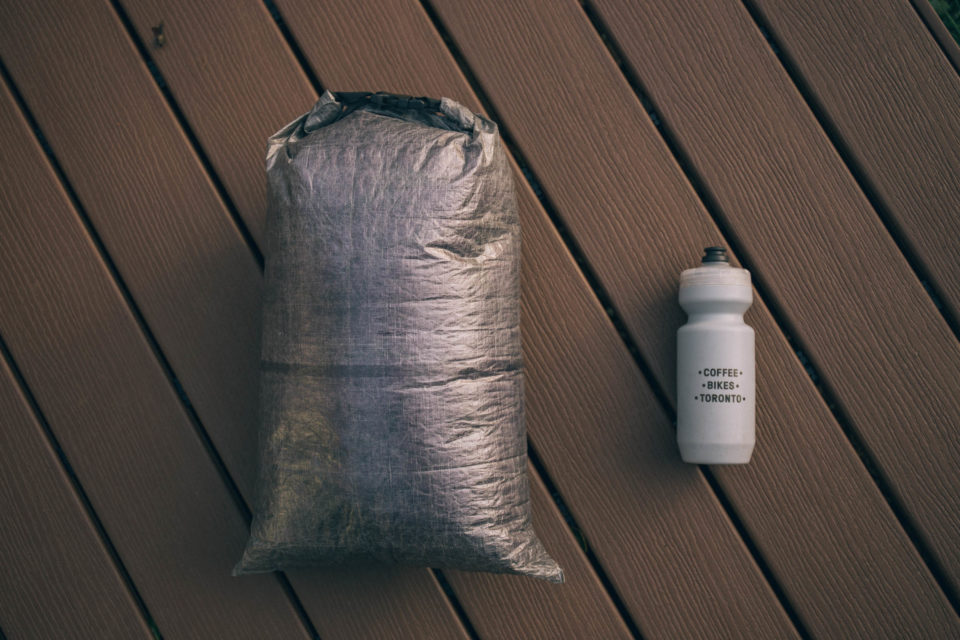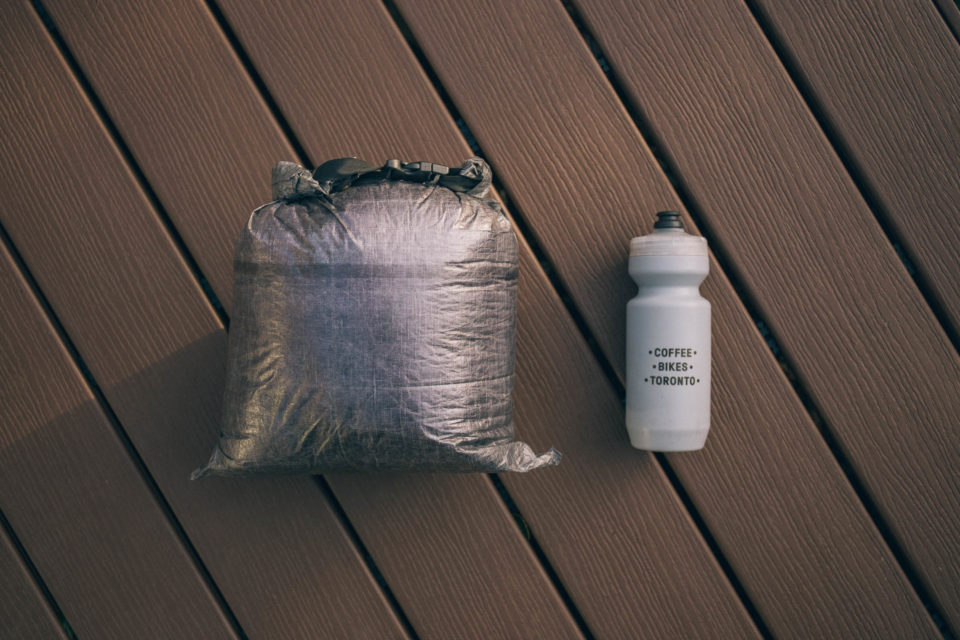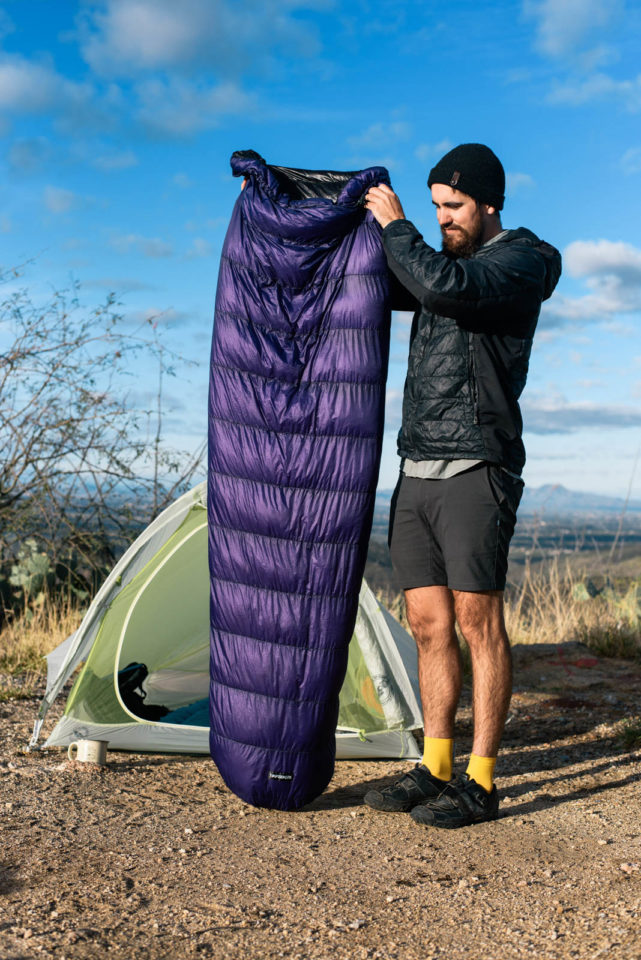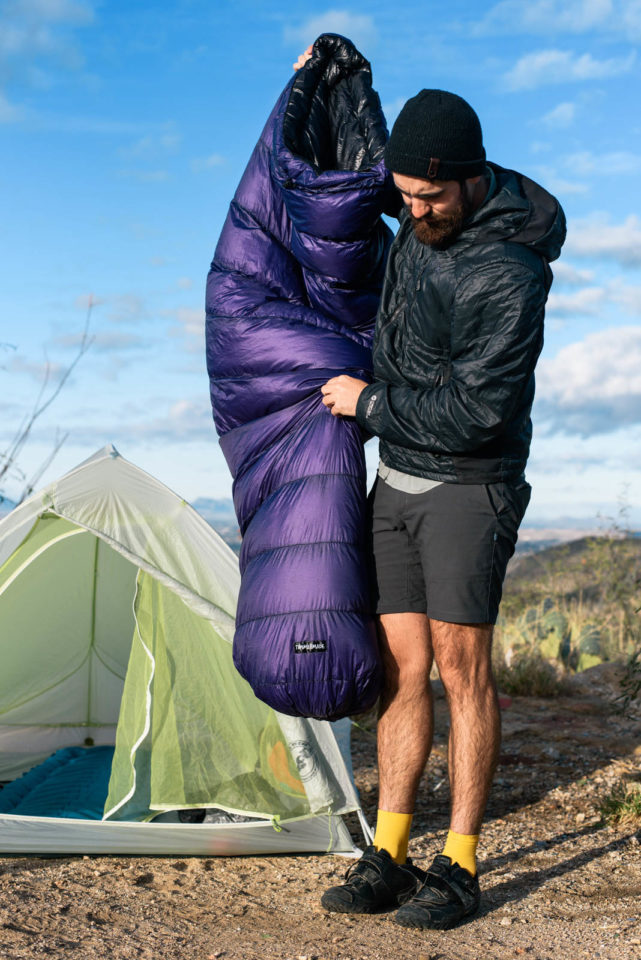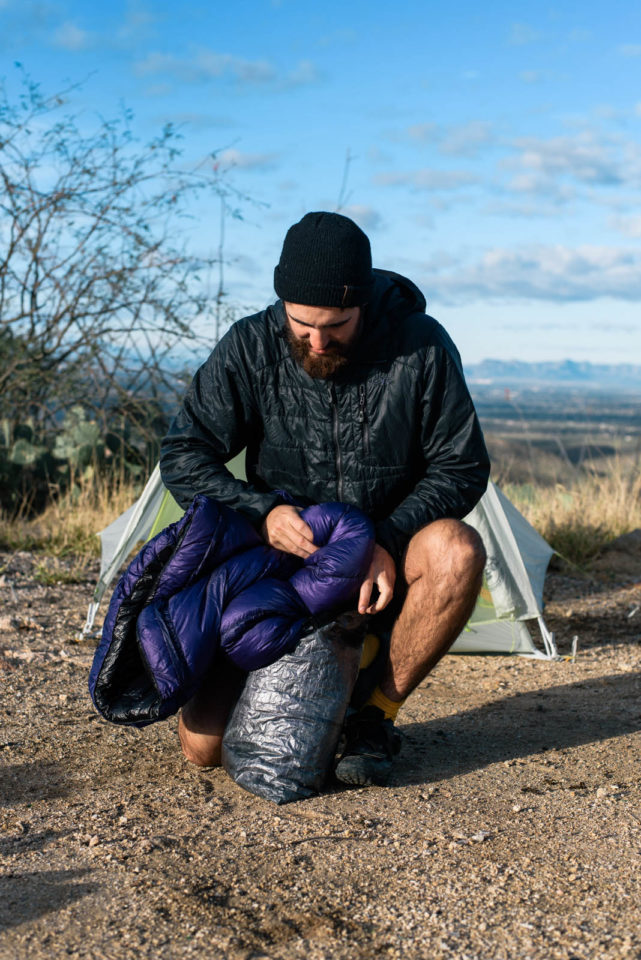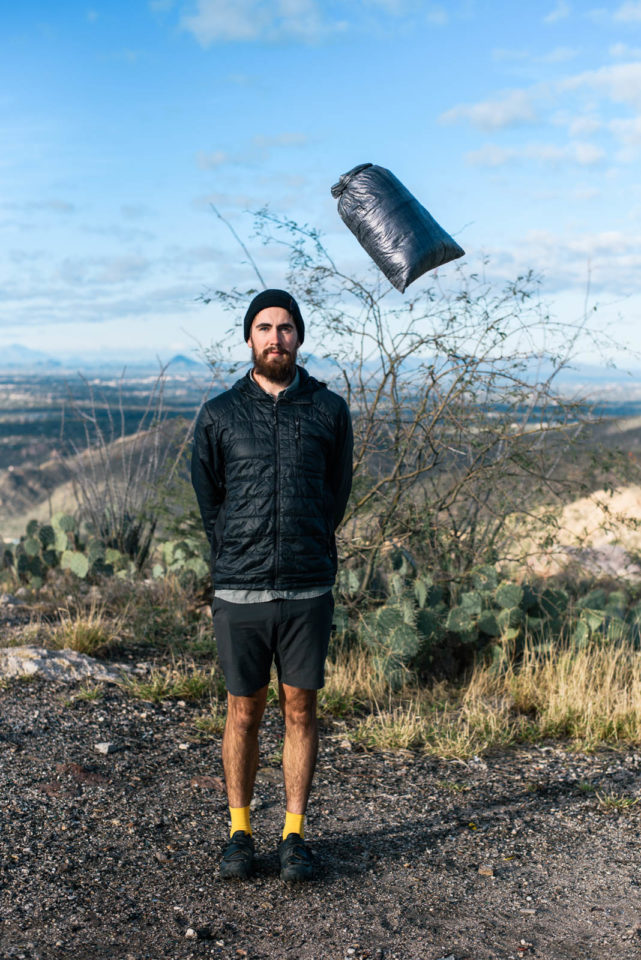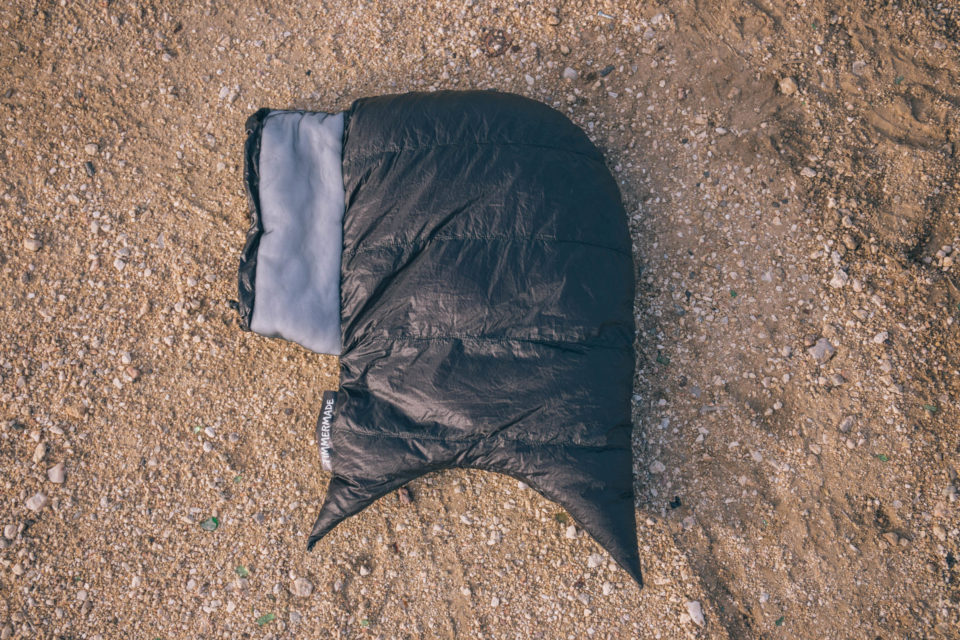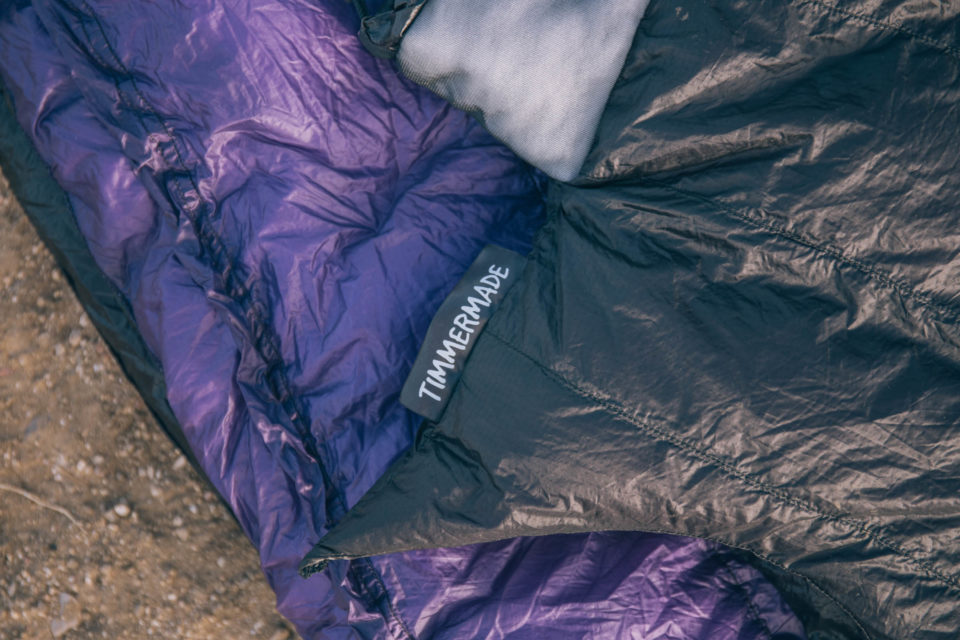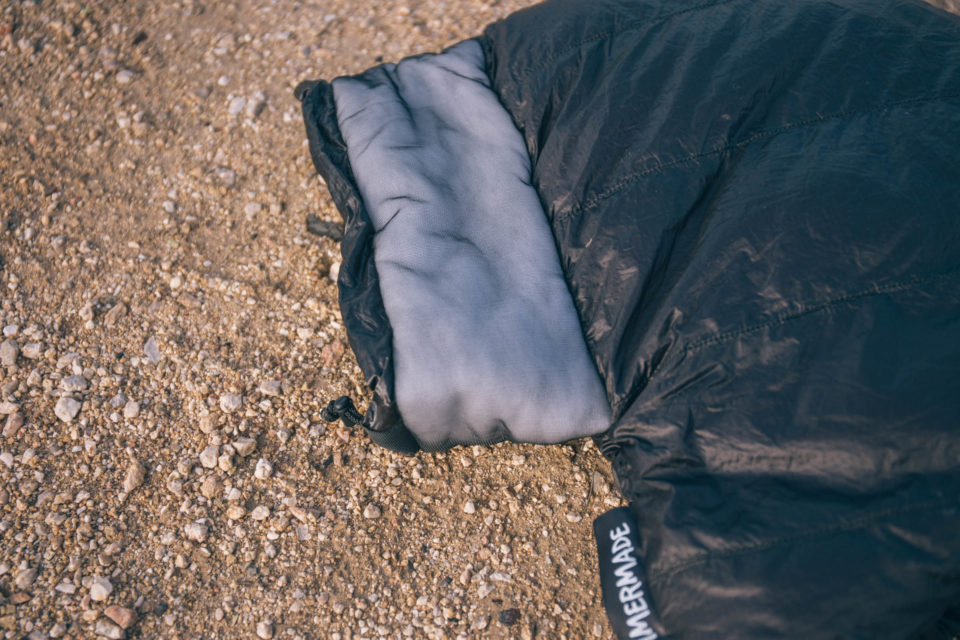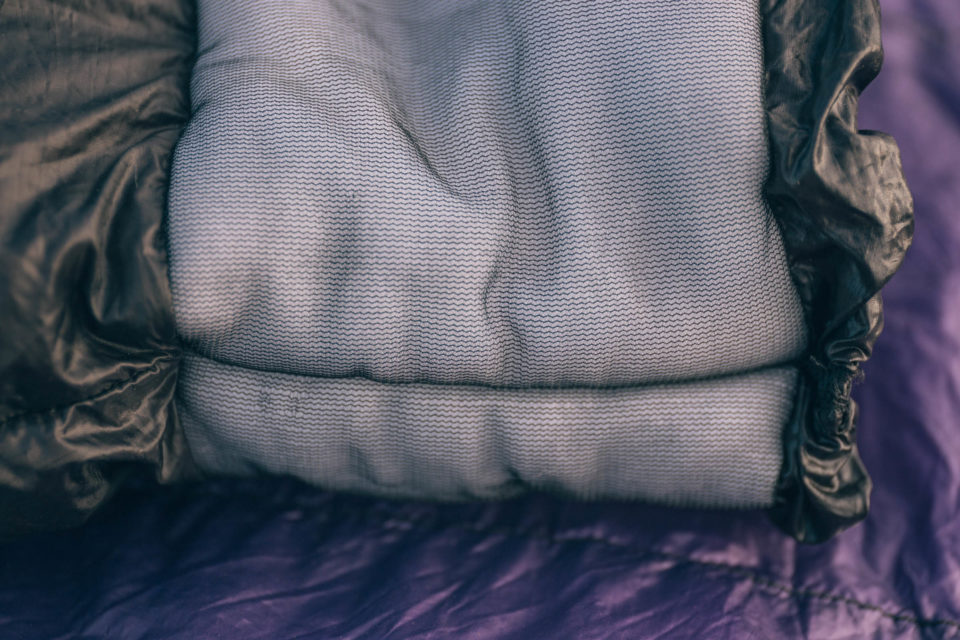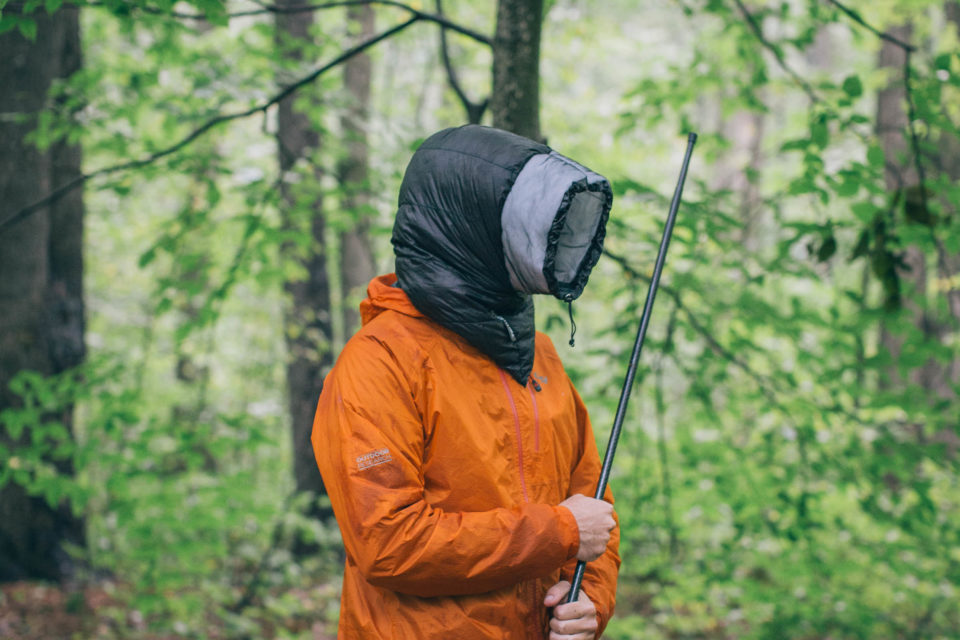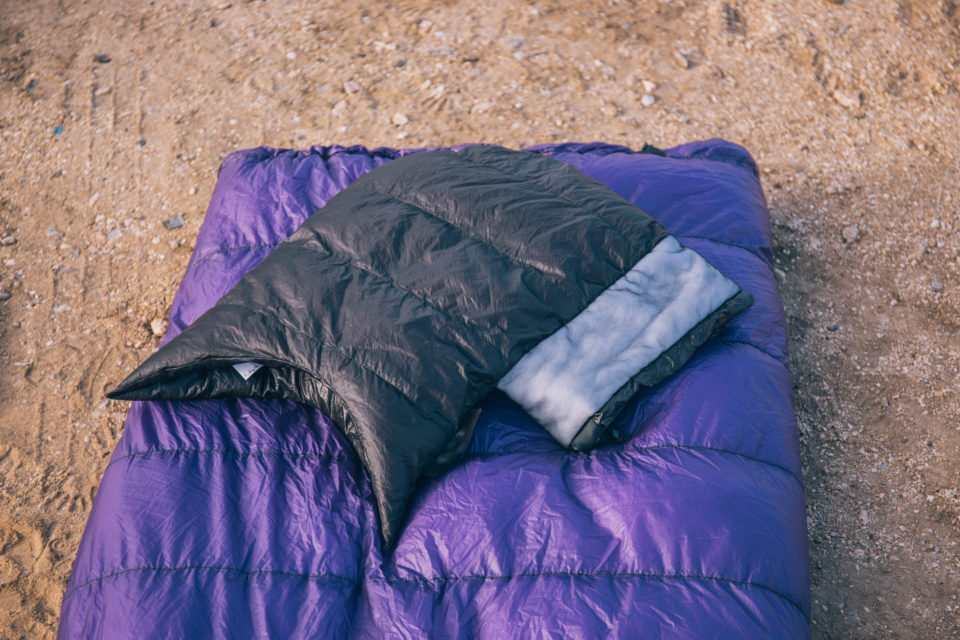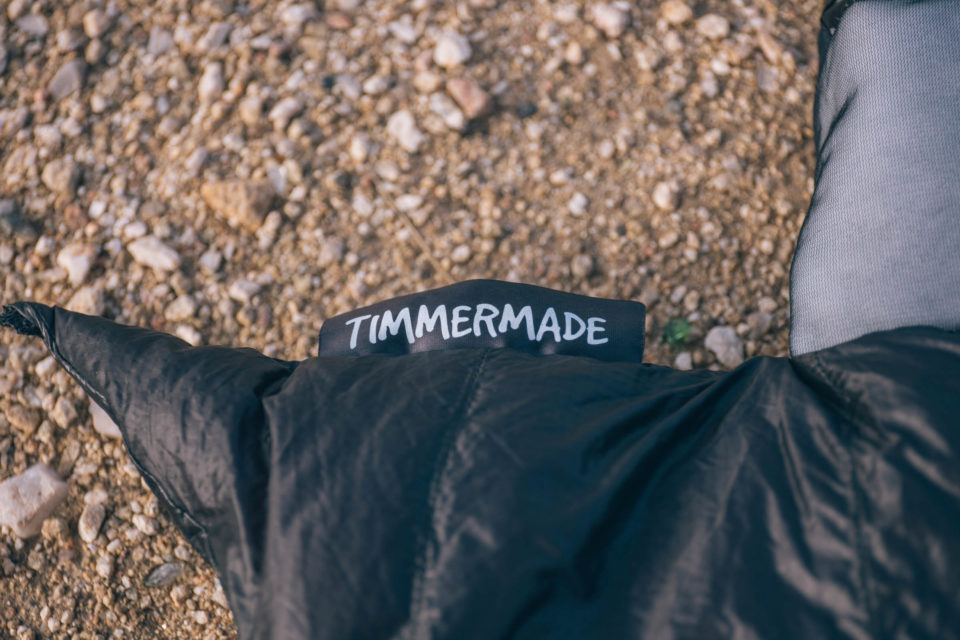Timmermade Wren False Bottom Sleeping Bag and Waterbear Hood Review
Share This
Timmermade offers custom sleep systems and apparel that are all made by hand in a solar-powered cabin in central New York. Miles has been using a Wren False Bottom Sleeping Bag and Waterbear Hood over the last few months, and reports back to share his thoughts. Find the review here, plus a Q&A with maker Dan Timmerman to learn more about his unique approach to custom gear…
I’m not sure how we landed on the topic of sleeping bags and down jackets, but it was Greg of Rockgeist who introduced me to Timmermade. I believe Greg referred to Dan Timmerman, the owner of Timmermade, as “basically the custom framebag maker of down gear.” Having a great deal of respect for Greg, I immediately shot a message to Dan and pitched the idea for a review. Before long, Dan was introducing me to his product line, educating me on features and concepts specific to down sleep systems, and… taking measurements for my custom sleeping bag? Similar to Rockgeist’s PhotoFit custom framebag system, Dan’s attention to detail and product knowledge meant I was getting a sleeping bag specifically tailored to my needs and my body.
Just like working with a custom bag maker, Dan was quick to acknowledge my “wants” and “needs,” and took them seriously. After a bit of back and forth, we settled on two items for me to check out: a custom Wren False Bottom Sleeping Bag, and Timmermade’s “claim to fame,” the Waterbear Hood.
Read on for a Q&A with Dan to learn more about his background, the business, and what makes his products special, followed by my thoughts on the Wren False Bottom Sleeping Bag and Waterbear Hood.

Q&A with Dan Timmerman
Tell us a bit about yourself. Where does cycling fit in?
Cycling has had a pretty dominant presence throughout my life. I started riding mountain bikes with my older brother in 1993, when I was 13, and then raced them through the rest of the 90s. I worked up to what was called semi-pro at the time. I had graduated high school and was working in a local bike shop. Toward the early 2000s, I quit racing and did quite a bit of bike touring, basically living on bike for a while.
Those were some of the best times of my life, and I found myself in pretty decent shape for racing after that, and ended up having a good bit of success at road racing. I signed my first professional racing contract in ‘07 and raced as a road pro till the end of ‘08. It wasn’t really my scene and I switched over to racing cyclocross. That went extremely well in 2009, but I wanted to pursue other things in life and called it quits for the second time. During this time, I built and lived in a yurt, bought some property with a cabin, and was getting into some primitive/ancestral skills. I felt like I had life headed where I wanted it to be headed, and decided I could fit cyclocross racing in again.
I came back in ‘12, racing professionally for the Richard Sachs CX team, eventually switching to the Stan’s Notubes CX team, where I finished my career. I was getting older as far as high-level racing is concerned, and construction work on my cabin started to take away from the training I should have been doing. Plus, the training really became a drag, and I knew it was time to walk away. Through all of this, I was still working at bike shops, doing mechanic work, and whatever else. Nowadays, I have the freedom to pursue athleticism in any form I like….which these days tends to be hiking and running. However, I still get out to ride on occasion. I’ve even done some recent bikepacking adventures. Still have a love for bikes. I just need a little break!
What’s the story behind Timmermade?
I’m cheap and I like to learn how to do stuff on my own, so over the years I dabbled in making my own clothing and gear. Years ago I pulled apart an old sleeping bag, saw how it was made, and rebuilt it differently. After that, I built a basic synthetic bag. Then I set the whole thing aside for a bit when I got my first contract in professional road racing.
Later, when I had moved on from racing, I got really into building my own wool clothing. As my skills progressed I was pushed into building more ultralight gear, not because I was all that into it at the time, but mostly because it was a challenge. Eventually, I was convinced to build some items for a friend, and with my platform as a bike racer at the time, I would post pictures of the gear. This inevitably led to people within the cycling community ordering stuff from me. It started mostly with down jackets. I’d build one for someone and post pictures of it when I was done and that would bring in another order or two. Things went like that for a while until I fully retired from racing and I was getting more into thru-hiking and general ultralight gear. I built my website and decided to give Timmermade room to grow into something.
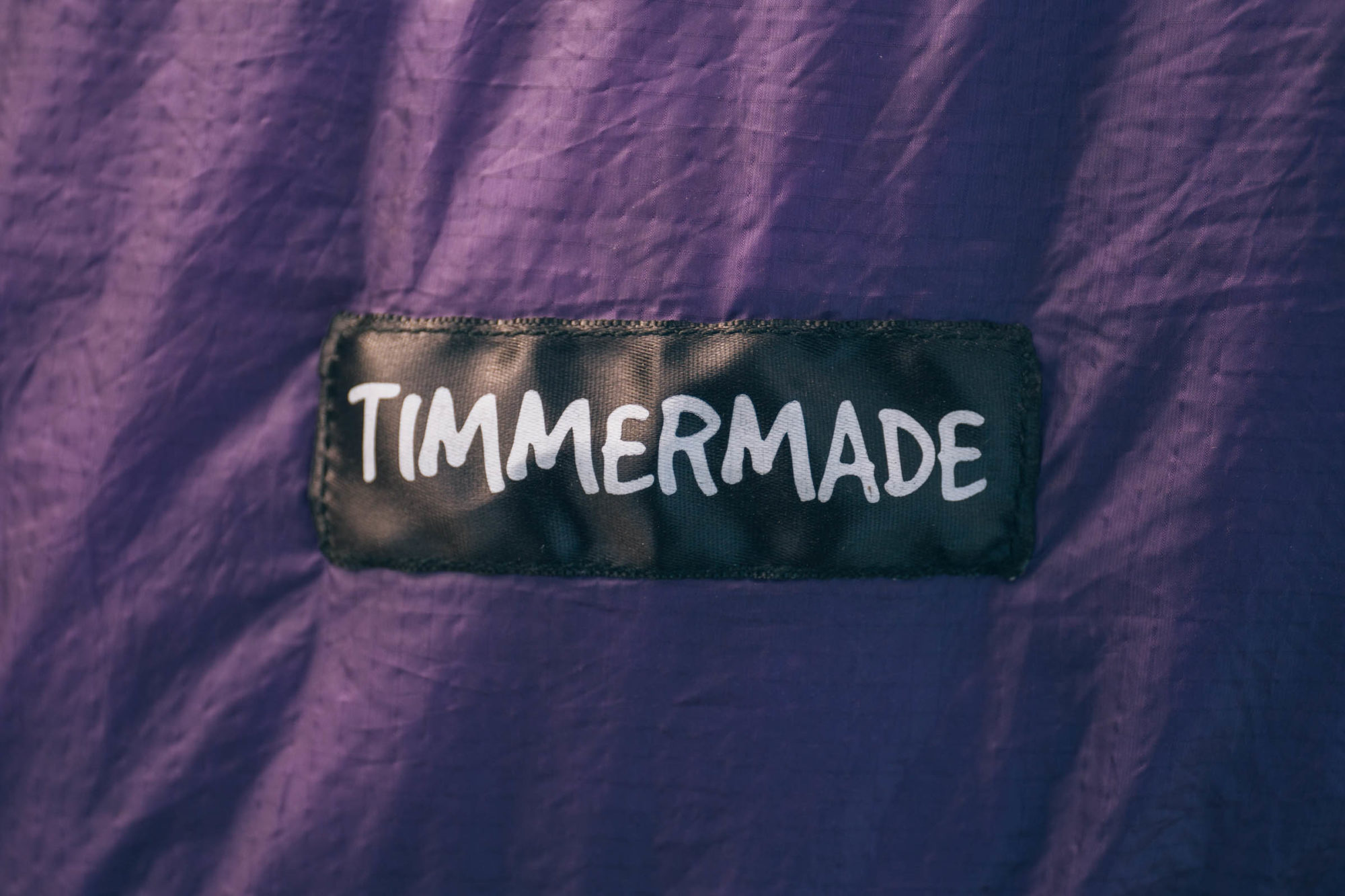
Tell us a bit about your off-grid cabin workshop.
Nine years ago, my wife and I were living in downtown Ithaca, New York, and wanted to get out. We moved into an old RV and parked it on a friend’s land out near the Finger Lakes National Forest. During that summer, I built a yurt there, which we lived in that fall/winter. We’d planned on living there for a while, but a friend of a friend was selling a 10-acre property three miles up the road with a neat 14 x 16’ timber-framed cabin with an off-grid solar power set up. It also had a 12 x 14’ timber framed barn, and two timber framed sheds on it.
Since we had just built the yurt, we tried to get some friends to buy it, but eventually we ended up making an offer. We moved in that February. It’s been a continuous project and pride of ours ever since. I’ve added on to the place twice and it’s more than doubled in size. I’ve doubled our solar output and worked on reducing our power demands by letting our DC refrigeration work with the outside climate during the colder months when the available sun is reduced. I built a big masonry heater for clean, efficient, and safe wood heat to go with our Waterford Stanley wood cookstove.
All this work factored into my retirement from racing as it was never ideal. During the last addition project I set aside a 10 x 10’ space as a sewing workshop, and this is where I do all Timmermade production while I’m in the East. All of this gear is sewn on my solar power system and gets a “Built with solar power” note on its tag. I spend the winters (at least) down in southern Arizona, where I ironically don’t have access to solar power and all my work is through grid power. I’m currently working on a mobile, mini school bus based solar powered workshop that would allow me to build with solar power from wherever.
Can we get a quick breakdown of your different sleep systems?
I offer everything broken up into two groups based on baffle design. My vertical, split baffle design has exceptional down control, so the fill is unlikely to move around. However, it’s very labor intensive to build, so I also offer horizontal baffle designs. These are much faster to build and can perform quite well with a little more attention.
Within these two groups, I offer a few designs. A traditional sleeping bag with full loft on top and bottom (the Oriole), two camping quilts (the Wren quilt and Junco quilt), and my false bottom bags (the Wren false bottom and Thrush false bottom) that improve upon the quilt design and have the full wrap of a sleeping bag but without the relatively useless bottom side fill that gets smooshed. Most people want to get rid of that fill on the bottom and favor a quilt or false bottom bag. I also offer a Climashield synthetic quilt and a Climashield synthetic over bag that clips onto any of my down sleep systems to boost warmth and handle moisture.
What’s the benefit of your non-integrated hood system, over a standard hooded mummy bag?
I build all my system with non-integrated hoods because I feel this is a major drawback to traditional mummy bag systems. In a mummy bag, when a sleeper moves in the night they end up spinning inside the bag. The problem with this is the integrated hood is stationary and they end up with an ear poking out the hood and their face buried in the side. This is not ideal as it makes for a cold ear and puts moisture from breathing into the down hood. The alternative is to roll the whole bag with the sleeper, but this is also not ideal. First, it’s hard not to roll off the sleeping pad with this method, but worse, as the sleeper rolls to one side they crush all that down fill. As they roll back to the other side that crushed fill doesn’t always loft back up and fill that exposed space. It’s best to have the sleep system stay put and nicely lofted up as the sleeper spins inside it with a nice warm hood that stays right with their head. By building on this whole non-integrated design, I was able to come up with the Waterbear hood. With the complete set up, the bag/quilt stays put and lofty, the sleeper spins inside it with a warm hood on, and that hood not only stays with the sleeper but also keeps a warm pocket of air near the face to breathe.
What sort of features are customizable when purchasing a sleep system?
My business is just me, building items for people. So, it’s infinitely customizable, at least in theory. I set up a framework of my designs and I have limits to my skill set, experience, and willingness. I’m probably not going to build something I don’t think will work or something I’m not confident I can do well, but a customer can email me and ask for whatever they want. I’ve set up my website to offer many customizable options right there, but if a customer can’t find what they want or want to chat about stuff they can email me directly through my site.
Why offer so many configurations and options? What’s the benefit to the user?
I think customization is one of the many benefits of the cottage industry over mass production. Mass production has to lump all the options together and try to accommodate everybody in limited options. When a customer orders from me, I read it and literally go build it from scratch. I believe that customer should have the freedom to build an item specifically customized for them since there is no need to lump everyone together.
However, I have to weigh this against causing an information overload. Some people just want to get an easy stock size instead of considering a bunch of options. I get it. I’ve run into it with my jackets. I have it set up as fully custom sizing. A customer orders the options they want and then grabs a tape measure and fills out all the measurements I ask for. This is great for some people who have proportions that can’t be lumped into stock sizes. For others, I think it can be a hindrance, and I’m currently working on putting up stock sizing for those that want it and providing a separate fully custom option for the others.
You’re not strictly using down insulation in your products, correct?
No, I build quite a bit with Climashield synthetic. I use it in a quilt, overbag, jacket, vest, and Waterbear hood. It’s also a critical component of the breathing tube on a Waterbear hood. It can’t quite touch down for weight and packed size, but it isn’t too far off. As is well known in the industry, its big advantage is in dealing with moisture.
In my testing, Climashield is exceptional at this, which is why I began experimenting with using a mesh inner shell with Climashield items. Climashield itself can get totally soaked but still feel warm against the skin. A nylon or poly inner shell, however, feels clammy and cold against the skin when wet. So I started building these with an Argon nylon outer shell, Climashield batting, and then a mesh inner that doesn’t stick to the skin or feel clammy when wet. This has the added benefit of being extra breathable and super fast drying.

You have an uncommon attention to detail. What drives this?
I guess I didn’t realize that. I suppose I’m just doing what I do, and what I do was born out of considering the details of gear I used and thinking about how to make it better. It’s unfortunate that being mindful of the details is a bit of a lost art in today’s marketplace. A company can produce a moderately functional item for cheap, make it fashionable, and dump cash into marketing it. Consumers then look for the easy, “one click,” cool thing that everyone else is getting and they sell like hotcakes. To me, this is backwards, especially for something like a sleep system. It’s a critical component of the highest priority for human survival: shelter. It’s going to keep you from freezing, yet you want it as light and small as possible. Designs can be very complicated and a lot of thought should go into them. At the same time, I understand that we live complicated lives and not everyone wants to mull over technical details, so I try to balance information with ease as best I can.
Lastly, any new products in the works? What’s next?
I’m currently working on getting my jacket patterns dialed so I can offer stock sizing for those that don’t need the tedious fully custom sizing. I’m chipping away at my bus build, and hopefully at some point I can offer “built with solar power” for all my items, attend trail day events, and even do made-to-order work while at events and/or trailheads. I’ve also started building with custom print Argon poly shell fabric. This has opened up all kinds of cool ideas. I can now take an image, have it printed on Argon shell, and then build an item with it. I recently made a really cool Wren false bottom bag for a photographer who wanted a sleeping bag built using one of his images. It came out amazing. I’m also working on a collaborative custom print jacket effort that should be hitting the bikepacking world soon. As for new products, I’m sticking with what I’ve got for now. It takes a lot of thought, effort, and trial and error to get things dialed. I have a lot of design options that I’m very happy with and I’ve spent loads of time dialing them in. I’m hoping to get what I have out there more.
Timmermade Wren False Bottom Sleeping Bag
Besides my desired temperature rating of 20°F, Dan asked for my height, shoulder circumference, desired footbox size, and fabric colour choice. I originally chose a burnt orange colour, however, Dan suggested I pick another as it weighed in at 0.9oz/yard, where the other colours are 0.67oz/yard. Grams matter. He then threw another curveball my way and requested a measurement along my thighs, when sitting down, which would be used to size the bag large enough in the torso so I could bring my knees up towards my chest. In an effort to keep the pack size and weight down, we went with a 950 fill-power down insulation, but added in a drawstring footbox for more ventilation.
When my sleeping bag arrived, the unmatched attention to detail was evident from the moment I opened it, which was exactly what I expected after getting to know Dan via email. The entire construction and design, not to mention the interactions leading up to the final product, were top notch. I’ve been known to size down when it comes to sleeping bags, to save weight, but it’s become clear that I sleep much better in a properly fitting bag. And when it comes to bikepacking multiple days in a row, a good night’s sleep is crucial.
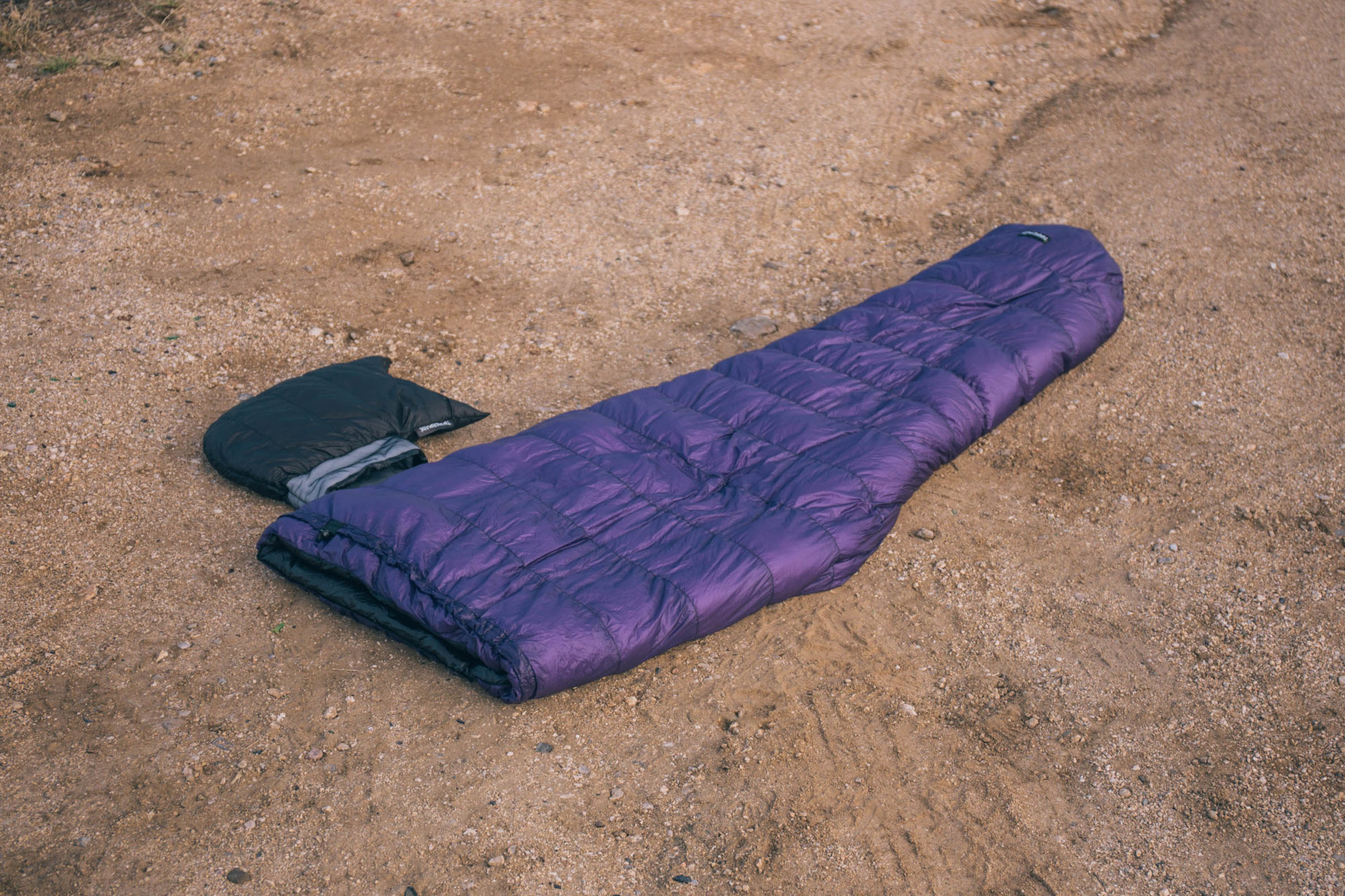
Unlike many of ‘big brand’ sleeping bags that pack in tons of unnecessary features, the Wren focuses on smart design. Timmermade’s False Bottom design takes the draft-free nature of a traditional sleeping bag but eliminates any unnecessary insulation under the sleeper, a similar concept to insulated quilts. The Wren uses a differential cut design, which, as Timmermade describes, is “when the inner and outer shells of a sleep system are cut to different sizes so that all of your down fill can stay fully lofted around you even if you push against it or pull it tight.” In short, the insulation will keep doing its job no matter how much you toss or turn during the night. Although a vertical baffle system can do a better job at keeping the insulation in place, avoiding cold spots, the Wren uses a 20% overstuffed horizontal baffle to save on manufacturing time and to keep costs down.
It’s hard to find any obvious flaws with the Wren False Bottom Sleeping Bag. I mean, it was custom built to be comfortable for me, so there’s not much to dislike. I’m a fan of Timmermade’s false bottom design, and agree that it’s a sweet spot between a traditional sleeping bag and quilt, taking the best of both into consideration. The drawcord footbox has been a great addition as well, allowing me to fully vent the bottom of the bag on warmer nights. When cinched up, a draft collar similar to the one at the top of the bag helps seal things up—a component Dan mentioned is often left out of other drawcord foot boxes—giving them a bad name.
I think the pack size for my 20°F rated Wren Sleeping Bag is totally acceptable for cold weather bikepacking. In fact, due to its reasonable pack size and lightweight design, I see no reason to use a lightweight quilt for any trips below 32°F now. There’s something to be said for packing a little more, and getting a whole lot more in return. In the case of sleeping bags, that often translates to a warmer, better night’s sleep. As far as pricing goes, my particular Wren would retail for $413, but that’s a cold-weather rated bag using the highest quality options available like 950 fill-power down and large sizing. Depending on the fill-power and size chosen, prices can range from $289 to $514. Custom sizing and features on any of Timmermade’s sleeping bags come at no extra charge, and stock size options also exist to speed the process up a bit.

Pros
- Custom sized for you at no extra cost.
- Made by hand in the USA.
- High-quality materials.
- Thoughtfully designed and sewn by someone who is passionate about their products.
- Great weight to warmth ratio, and packs down well.
Cons
- Not as much room to move around as an open-backed or zippered quilt.
- Potential for wait times as most items are made to order.
- No integrated hood option, which might not work for everyone.
- Model Tested: Custom Timmermade Wren False Bottom
- Temperature Rating: 20°F (-6.6°C)
- Weight: 573g (1.2lb)
- Place of Manufacture: New York, USA
- Price: $413 USD (as tested)
- Manufacturer’s Details: Timmermade.com
Timmermade Waterbear Hood
Leave it to Timmermade to come up with the Waterbear Hood, fittingly named for its resemblance to the head of a tardigrade. It’s a down insulated sleeping hood designed to make cool weather camping more enjoyable, and it pairs well with the Wren False Bottom Sleeping Bag for a complete insulated sleep system. Although it might look like some kind of mythical cloaking hood, the Waterbear Hood is Timmermade’s best selling product and may well be their claim to fame. The hood is based around a form fitting down insulated hood, with a Climashield mesh tunnel around the opening. This tunnel provides a warm pocket of air around your face, it’s adjustable, and thanks to its ability to manage moisture, it dries out quickly in the morning. The Waterbear Hood is available in three different temperature ratings, which is determined by loft thickness; 1.5″ (0-20°F), 2.5″ (-10-10°F), and 3″ (-25°F and colder).
The Waterbear Hood I’ve been using is constructed from a lightweight Argon 67 shell and 800 fill-power down with 1.5” of loft. What I like about the Waterbear Hood most is its packability and lightweight design. Weighing in at just over 2oz, it’s a perfect companion for cold weather bikepacking, and the minimal design means it packs down incredibly small, easily fitting in my bags. The adjustable opening provides plenty of movement, which helps regulate how warm things get, and it keeps your neck and ears warm when using a hoodless sleeping bag or quilt. I’ve often resorted to wearing an insulated hooded jacket in these types of situations, which usually ends up being overkill for my upper body. The Waterbear Hood is one of those clever products that makes you think, “Why didn’t I think of that?!” But then you remind yourself that Dan did, and that’s why Timmermade exists.
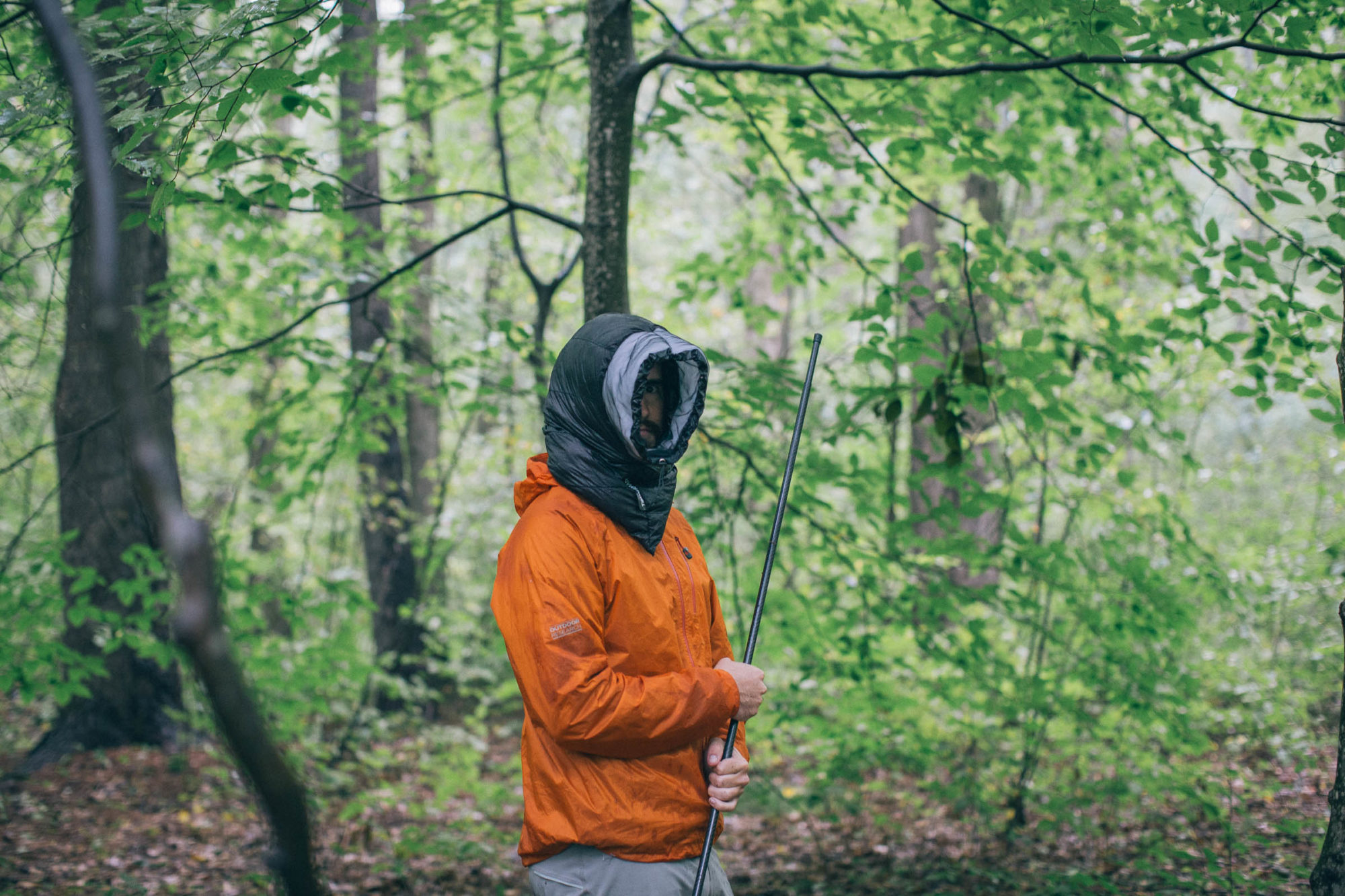
My one gripe is that the main opening isn’t big enough to completely open up around my face while in use. I’m sure this will depend on the user, but even with the Climashield tunnel folded back, I felt the hood disrupted my peripheral vision to the point that I wasn’t comfortable wearing it outside of my tent. While sleeping, the hood provides a cozy home for your head and neck, and is a great addition to any hoodless sleeping bag or quilt.
Pros
- Great addition to any hoodless sleeping bag or quilt.
- Made by hand in the USA.
- Packs down to nearly nothing.
- Extra cozy for cold nights outside.
Cons
- Peripheral vision is impacted from small face opening.
- Claustrophobic for some.
- Model Tested: Timmermade Waterbear Hood
- Insulation: 1.5” 800fp
- Material: Argon 67
- Weight: 62g (2.2oz)
- Place of Manufacture: New York, USA
- Price: $94 USD
- Manufacturer’s Details: Timmermade.com
Wrap Up
Without question, Timmermade is making some of the highest quality down gear available. The fact that all of the products are made by Dan Timmerman’s hands, often out of a solar-powered cabin, is the cherry on top. I expected astronomically high prices to go along with that, but my opinion is that the prices are fair, the quality is superb, and Dan is responsible for some unique designs that exist within a pretty stale segment of the outdoor gear industry. Perhaps one of the greatest perks is having gear tailor-made to your size and needs at no extra cost. This holds a lot of value in my mind.
If you like quality gear that’s made to last, and value pack size and weight while bikepacking, I’d strongly consider checking out Timmermade’s sleep systems. While the Waterbear Hood might be a bit much for some people, the Wren False Bottom Sleeping Bag is now my most prized camping possession. It’s also worth mentioning that Dan also offers completely custom, one-off items, if you’re on the hunt for something that doesn’t appear on the Timmermade website.
Please keep the conversation civil, constructive, and inclusive, or your comment will be removed.






